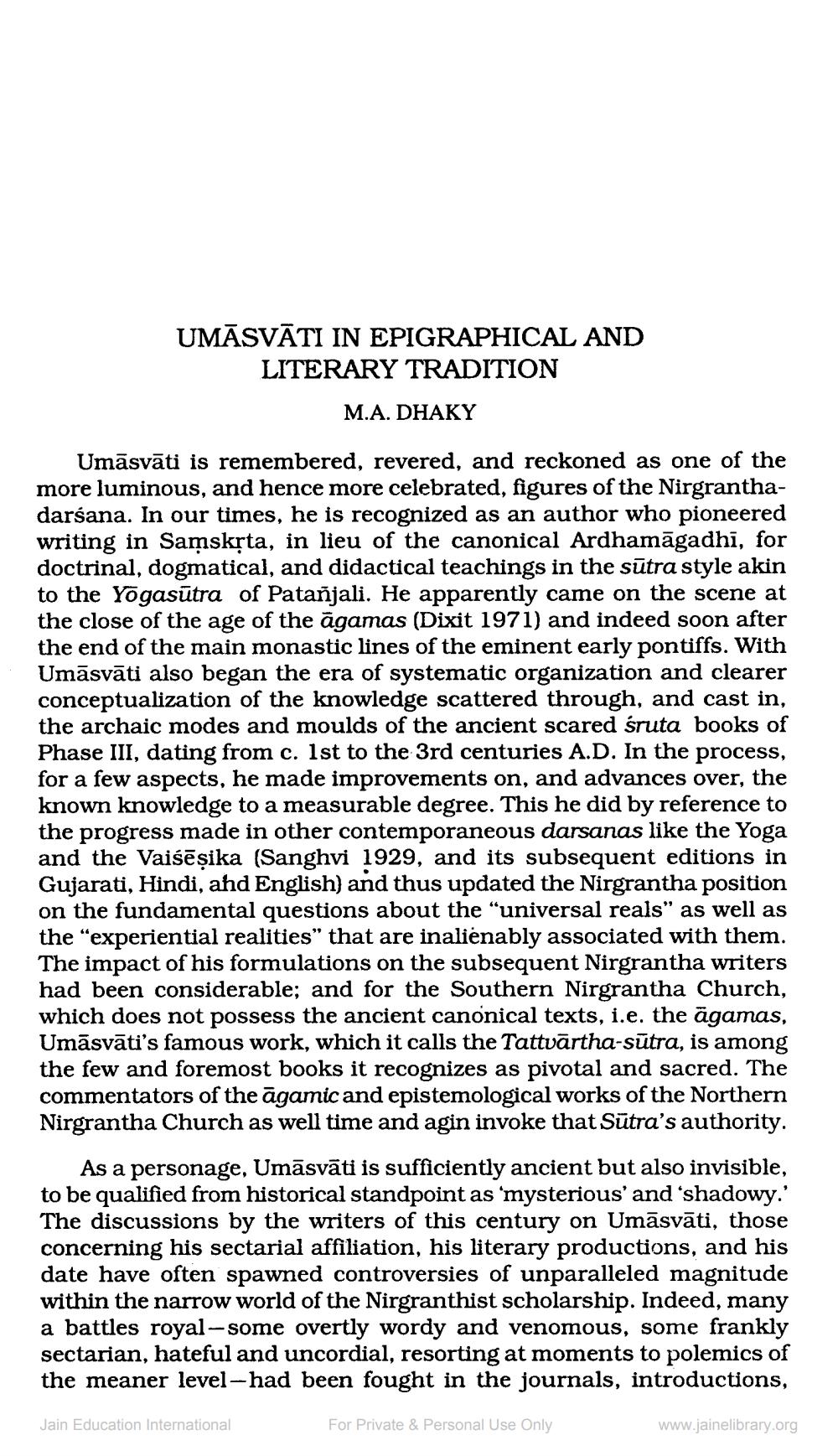________________
UMĀSVĀTI IN EPIGRAPHICAL AND LITERARY TRADITION
M.A. DHAKY
Umāsvāti is remembered, revered, and reckoned as one of the more luminous, and hence more celebrated, figures of the Nirgranthadarśana. In our times, he is recognized as an author who pioneered writing in Samskrta, in lieu of the canonical Ardhamāgadhī, for doctrinal, dogmatical, and didactical teachings in the sūtra style akin to the Yogasūtra of Patañjali. He apparently came on the scene at the close of the age of the āgamas (Dixit 1971) and indeed soon after the end of the main monastic lines of the eminent early pontiffs. With Umāsvāti also began the era of systematic organization and clearer conceptualization of the knowledge scattered through, and cast in, the archaic modes and moulds of the ancient scared śruta books of Phase III, dating from c. 1st to the 3rd centuries A.D. In the process, for a few aspects, he made improvements on, and advances over, the known knowledge to a measurable degree. This he did by reference to the progress made in other contemporaneous darsanas like the Yoga and the Vaiśēșika (Sanghvi 1929, and its subsequent editions in Gujarati, Hindi, and English) and thus updated the Nirgrantha position on the fundamental questions about the "universal reals" as well as the “experiential realities" that are inalienably associated with them. The impact of his formulations on the subsequent Nirgrantha writers had been considerable; and for the Southern Nirgrantha Church, which does not possess the ancient canonical texts, i.e. the āgamas, Umāsvāti's famous work, which it calls the Tattvārtha-sūtra, is among the few and foremost books it recognizes as pivotal and sacred. The commentators of the āgamic and epistemological works of the Northern Nirgrantha Church as well time and agin invoke that Sūtra's authority.
As a personage, Umāsvāti is sufficiently ancient but also invisible, to be qualified from historical standpoint as 'mysterious' and 'shadowy.' The discussions by the writers of this century on Umāsvāti, those concerning his sectarial affiliation, his literary productions, and his date have often spawned controversies of unparalleled magnitude within the narrow world of the Nirgranthist scholarship. Indeed, many a battles royal-some overtly wordy and venomous, some frankly sectarian, hateful and uncordial, resorting at moments to polemics of the meaner level – had been fought in the journals, introductions,
Jain Education International
For Private & Personal Use Only
www.jainelibrary.org




